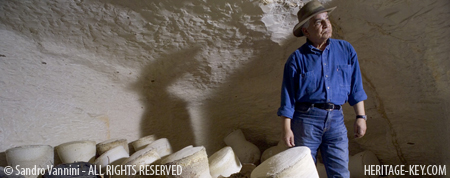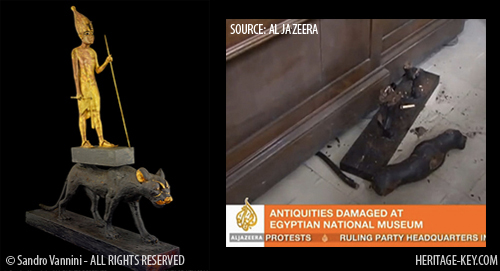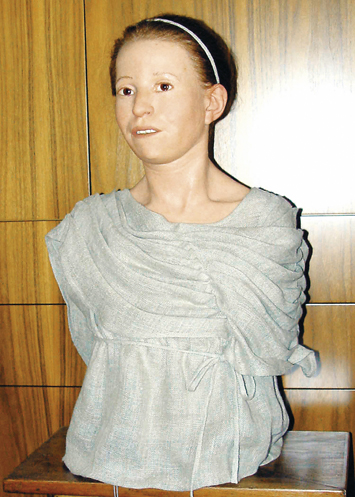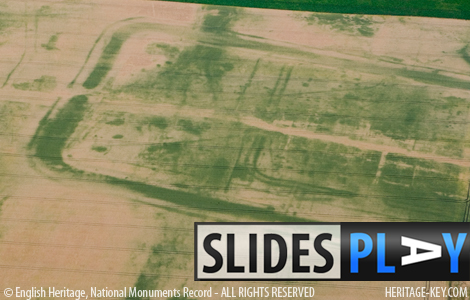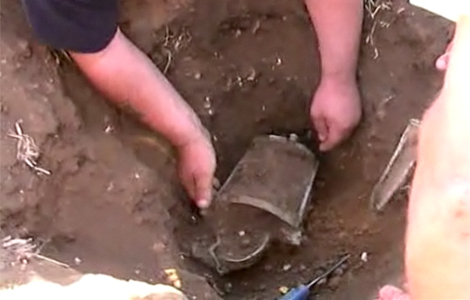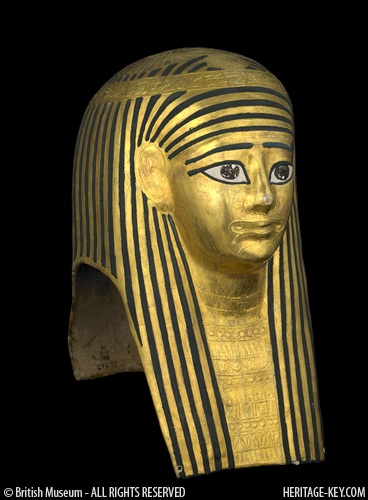Dr Zahi Hawass, has been promoted in the shake up of Egyptian President’s Hosni Mubarak’s new cabinet according to a report from AP. Formerly the Vice Minister for Culture, and the Secretary General of the Supreme Council of Antiquities (SCA), Dr Hawass will now take the role as Minister of a newly created department – the State Ministry for Antiquities. Literary critic Dr Gaber Asfour has been named the new Minister of Culture, replacing the long-serving Farouk Hosni. The cabinet shake up comes in the wake of political turmoil across Egypt, which saw a lack of police protection for key…
-
-
As the protests in Egypt gained momentum over the weekend, reports came out that the ruling National Democratic Party headquarters were ablaze, a building which is next door to the Egyptian Museum in Cairo, where looters damaged several priceless artefacts and mummies, including contents of King Tutankhamun’s Tomb. When a curfew was declared at 6pm in Cairo, all but three police officers abandoned their posts at the Egyptian Museum in Tahrir Square, the heart of the capital where protesters are focussing their anger against President Hosni Mubarak. Like many famous Egyptian attractions such as the Pyramids of Giza, the Egyptian…
-
Museums across the world are participating in the “Ask a Curator” event, which uses social networking service Twitter to let the public ask questions to the people curating some of the biggest cultural establishments across the globe. With over 300 experts participating in 23 countries, you can find out the answer to all those questions you may have been wondering regarding the behind-the-scenes runnings of a museum, such as how big those hidden basements full of artefacts (Check out the Basement of the Cairo Museum in this Video) really are, and how does a museum decide what exhibitions to put…
-
‘Myrtis‘ has attracted thousands of people across Greece to see her, has appealed to the world leaders to end the spread of disease and now she earns herself a place amongst historic artefacts in the National Archaeological Museum in Athens. All this, and her name isn’t actually Myrtis. It was the name that was given to her by scientists who uncovered her remains, as well as over 150 other skeletons, from an archaeological dig of a ‘plague grave’ at Kerameikos Cemetery dating back between 426-430BC, as reported by ana-mpa. Myrtis’ resurrection some 2,500 years after her death from Typhoid –…
-
The sunny, dry spells of May and June over Britain were enjoyed immensely by the populace, but it wasn’t just Brits who were taking advantage of the soaring temperatures. Archaeologists were taking to the skies to observe cropmarks which occur when wheat or barley crops grown over ancient buried sites at a different rate. The aerial surveys have produced many new discoveries, including newly-discovered Roman and prehistoric settlements, representing the most successful summer flights since the drought of 1976. Results of the flight have revealed the Roman fort in Newton Kyme, North Yorkshire to be bigger than previously thought, with…
-
The only complete example of a Roman lantern to have been found in Britain was discovered in Autumn 2009 by a metal detector user. Danny Mills found the large bronze object whilst scanning a field near Sudbury, and immediately notified the discovery to the Suffolk Archaeological Unit. The find is significant as only fragments of similar lanterns are held at the British Museum, and the closest complete example was excavated in Pompeii. The interest in the lantern even earned it a feature in the BBCseries “Digging for Britain”! The Roman lantern dates from between 43-300AD, and is similar to a…
-
A BBCFour series presented by historian Michael Wood will be examining “The English Story”, which will be exploring the history of England not through monarchs and aristocrats, but through ordinary people. The programmes will be centred around the old parish of Kibworth, Leicestershire in the heart of England, which has a history rooted in Roman occupation, and found itself on the frontline between the Saxon and Viking territories. The series will explore the people of Kibworth’s past through letters, diaries, censuses, medieval tax rolls and the Domesday Book (Find your own past on the Online Domesday Book here), as well…
-
An interesting concept powers a new website launched by the BBC called Dimensions, which uses data from historical sources to map the area of ancient sites such as the Long Walls of Athens, Stonehenge and the Great Library of Alexandria. The outline of these heritage sites can then be overlayed on top of any other area, so you can see the size of the ancient cities relative to where you live yourself! In a similar sort of scheme as the recent oil spill disaster in the Gulf of Mexico (which saw the British Museum targetted as part of a protest…
-
Though not quite as pretty and detailed as the famous Terracotta Warriors in Xi’an, a new discovery of statues in Guizai Mountain, Hunan, China outnumbers the Qin Emperor’s army of stone soldiers, and date back over 5,000 years -over 2,500 years earlier than Qin Shi Huang’s Terracotta Army. Located on what is an ancient worship site, the discovery of over 5,000 statues arespread over 15 square kilometres and the vast majority are believed to have been carved before the Qin dynasty era. The anthropoid stone statues range from 30cm to 100cm in height, and take the form of several ranks…
-
The British Museum’s upcoming exhibition, “Ancient Egyptian Book of the Dead” is set to open on 4th November 2010 and a video posted on the British Museum’s Youtube channel gives a teaser to one of the artefacts which will be a part of the show. The quick video shows the cleaning of Nesbanebdjed’s wooden mask from his coffin in the museum’s Organic Conservation laboratory, which will be one of the pieces on display when the exhibition opens this Autumn. The star of the show will doubtless be the beautifully illustrated papyrus and linen works depicting the journey from death to…

